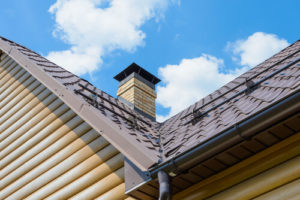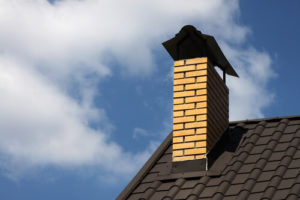Basics of Chimney Flues and Flue Sealant
The flue system is a combination of many parts that work together to vent a fire. In order to do the job correctly, the parts should be installed correctly and maintained regularly. This means that homeowners should schedule routine chimney sweeps, and annual inspections to have the safest and most efficient chimney system.
The Flue
The flue is the actual vent that the byproducts from the fire flow through. It goes from the fireplace to the top of the chimney where it’s protected by a chimney cap. The flue should be lined with a flue liner that protects the masonry from corrosion, protects the home from hazardous gases, and prevents heat transfer. The flue liner’s surface should be smooth, and joints should be strengthened with a high heat sealant.
HeatShield® Cerfractory® Flue Sealant
Cerfractory® technology is a hybrid ceramic/refractory material, developed over 20 years ago. It’s a combination of high-fired ceramic with the heat resistance of high-temperature refractory cement. The sealant is a powder, that is mixed with water right before use. This sealant should be applied only by a qualified professional. Once mixed and applied correctly, it air cures to a hard, ceramic material that is moisture resistant, and corrosion resistant. This smooth surface keeps its strength and shape despite high temperatures and chemical abuse.
HeatShield® Repair Systems
At Chief Chimney Services, we know the importance of an appropriate flue liner and offer services to keep your flue working for you. We use HeatShield® Cerfractory® systems for chimney restoration, joint repair, resurfacing, and relining.
- Joint Repair System – For chimneys with defective mortar joints, to repair and strength mortar joints to restore the flue to full function. The sealant is applied with a special applicator that fills cracks, gaps, and voids, smoothing the surface as it goes.
- Resurfacing System – To repair mortar joints and minor defects in tile lined flues, specifically. The sealant fills gaps, cracks, strengthens, and smooths surfaces. The resurfacing system covers the entire flue interior from top to bottom, restoring a damaged flue that is structurally sound.
- CeCure® Sleeve Relining System – To restore the chimney liner when serious defects are present, or to line an unlined chimney. HeatShield® is used in combination with a liner sleeve and then sealed with the sealant, for a smooth surface for the interior. The technician checks the work with a video surveillance system.
Call Now
When your flue is damaged, dirty, or inappropriate for your fuel type, you should get it looked at as soon as possible. If your flue isn’t working properly, neither will your chimney system. Voids, gaps, and cracks in the liner or flue will lead to water damage in the chimney, hazardous gases in the home, inefficient chimney, and increased fire risk. Just as it’s important to have a professional sweep and inspect your system regularly, it’s important to have a professional apply a sealant. An amateur may use sealants that aren’t appropriate for high heat. When you trust Chief Chimney Services to repair your flue, you know we’re putting your safety and comfort first.
Call Chief Chimney Services today and talk to a flue expert about flue sealant.

